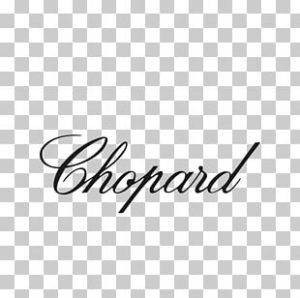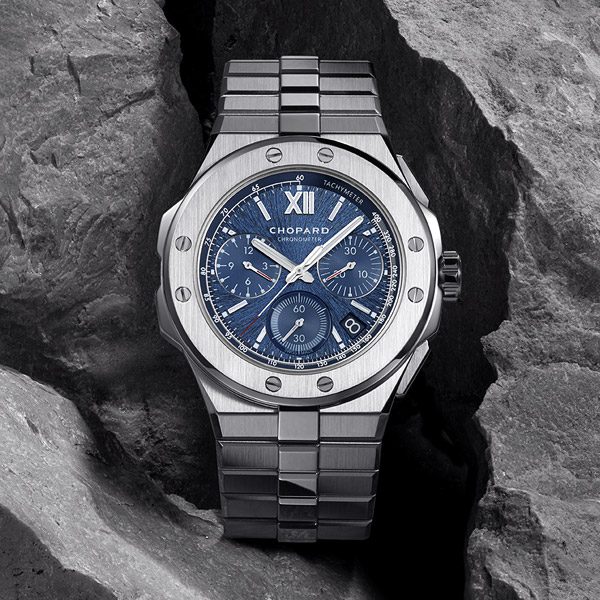Contents
Summary
Swiss luxury brand Chopard is celebrated for its exceptional craftsmanship in watches and jewellery, combining traditional artistry with modern innovation. Founded in 1860, the brand has become synonymous with elegance, sophistication, and innovation, offering iconic collections such as Happy Diamonds and L.U.C watches. Chopard is also recognised for its ethical leadership, pioneering the use of sustainable and fair-mined materials through its “Journey to Sustainable Luxury” initiative. From adorning celebrities on the red carpet to crafting the prestigious Palme d’Or for the Cannes Film Festival, Chopard stands as a symbol of timeless luxury and responsible craftsmanship.
History
In Sonvilier, the hometown of Chopard founder Louis-Ulysse, it was a custom for local farmers to pad their meagre winter income by assembling watches across small independent and specialised units. The components would then be collected by a master watchmaker to be assembled and fine-tuned into the finished product. The story of Louis-Ulysse Chopard is quite inspiring — the son of a farmer from Sonvilier, he grew up as an artisan watchmaker who in 1860 established L.U.C. manufacturing company, having observed it was more commercially viable to market the finished watch than manufacture mechanical movements. The handcrafted, slim and precise pocket watches were sold throughout Europe, including the court of Tsar Nicholas II, Russia Tir Fédéral and Swiss Railway Company. It was now a worldwide phenomenon.
Following the death of Louis-Ulysse in 1915, the company was helmed by his son Paul-Louis and grandson Paul-André who specialised in pocket watches and ladies wristwatches. In 1921, Paul-Louis relocated operations to Chaux-de-Fonds and again in 1937, to Geneva. This enabled movements made by the company to be certified with The Geneva Seal. Paul-André took the reins of company in 1943. In two decades, with no children wishing to enter this business, he sold it to German goldsmith and watchmaker Karl Scheufele III. In 1957, Karl married Karin Ruf. Her father, Fritz Ruf was a spirited entrepreneur and motivated Karl to build an empire.
Chopard is one of the last family-run watchmaking and jewellery companies. Since the Eighties, the duo’s children Caroline and Karl-Friedrich played an active role as co-presidents. Caroline Scheufele developed Haute Joaillerie while Karl-Friedric developed sports watches and Chopard Manufacture in Fleurier, which produces L.U.C movements. Together they built one of the most formidable luxury brands and remained independent. In 2010, the company celebrated its 150th anniversary. At the time, its revenue was reported €550 million. In 2014, Chopard reportedly recorded sales of US$915m and is a member of Federation of the Swiss Watch Industry.
Chopard is now bridging the gap between jewellery and watches handcrafted with ethical gold and responsibly sourced gemstones be it diamonds, emeralds, Paraiba tourmalines or black opals and the highest level of precision in watchmaking. Titled Green Carpet collection, it has been widely appreciated and sought after by the A-list. The project, Journey to Sustainable Luxury, would undoubtedly lead the brand down a path to success. The latest collection uses ethically sourced diamonds and gold to create contemporary jewellery with designs that evoke the look and feel of fine antique lace.
In more recent news Julia Roberts is the face of Chopard Happy Sport floating diamonds watch for woman when launching new versions of this watch that has also become an icon. Charmed by the boldness of the Happy Sport diamond watches creations, Julia Roberts pointed out in a company statement: “I am honoured to be collaborating with Chopard on the Happy Sport watch, one of the most iconic and desirable models in the industry.”
Mission Statement
Chopard, as a family-owned luxury watch and jewellery manufacturer, is dedicated to preserving the art of excellence and innovation while maintaining a deep respect for tradition. With a legacy that spans over a century, Chopard takes pride in its heritage, where each creation embodies a unique blend of traditional craftsmanship and modern design.
The company’s mission is to craft exceptional pieces that not only showcase technical precision and aesthetic beauty but also reflect the brand’s unwavering commitment to quality and creativity. By combining cutting-edge technology with time-honored techniques, Chopard continues to push the boundaries of what is possible in the world of haute horlogerie and high jewellery, ensuring that every piece is a testament to their pursuit of perfection.
Beyond its dedication to creating masterpieces, Chopard is committed to fostering a meaningful connection with its global community. The luxury brand values the relationships it builds with its clientele, partners, and artisans, viewing these interactions as essential to its mission. By engaging with its community, Chopard aims to inspire and share its passion for the art of fine watchmaking and jewelry. This sense of community extends to the luxury brand’s ethical practices as well, where sustainability and responsible sourcing are integral to its operations. Chopard’s mission includes a strong emphasis on ethical luxury, demonstrated through initiatives like the “Journey to Sustainable Luxury,” which ensures that their materials are sourced in a way that respects both people and the planet.
By remaining true to its values of integrity, innovation, and tradition, Chopard continues to set the standard in the luxury industry, offering products that are not only beautiful but also meaningful and responsibly crafted. Through its dedication to excellence, innovation, and community, Chopard upholds its role as a steward of both artistic heritage and progressive, sustainable practices in the world of luxury.
Vision
Passed on from one generation to the next since the Maison was founded.. Chopard’s vision has been forged over time and with the contribution of every member of the family who oversee it. Nowadays it is this unique Family Spirit that differentiates Chopard in the world of High Jewellery and High Watchmaking. It is evident in every step the Maison takes along with its hallmarks of emotion and generosity.
Chopard’s Independence allows it to support crafts with a glorious past that are a source of great pride today. Together with the impetus provided by the Scheufele family.. this support of its artisans also drives a boundless creative daring that sets the maison apart. A daring that has led Chopard to pave the way for a new vision of ethical luxury.
Leadership Team
Marc Hruschka: President and CEO
Caroline Scheufele: Artistic Director
Products and Services
Chopard is a distinguished Swiss luxury brand celebrated for its exquisite watches, jewellery, and fashion accessories. that reflect the luxury brand’s heritage of craftsmanship and innovation. Chopard’s watches, such as the iconic L.U.C series, are celebrated for their precision and sophistication, often featuring in-house movements and complex complications. Meanwhile, collections like Happy Sport and Mille Miglia combine traditional watchmaking with modern design elements, showcasing Chopard’s ability to balance classic elegance with contemporary appeal.
In addition to watches, Chopard is acclaimed for its jewellery collections, which emphasize artistic expression and ethical practices. The Happy Diamonds collection, with its signature floating diamonds, brings a sense of playful luxury, while the Ice Cube collection offers a modern, geometric aesthetic. Chopard is also committed to sustainability, using Fairmined gold and ethically sourced gemstones in its jewelry creations. This dedication to responsible sourcing not only enhances the intrinsic value of its pieces but also aligns with the brand’s values of integrity and excellence.
Chopard’s services extend beyond product offerings, providing clients with bespoke and personalized experiences. The brand offers custom jewelry design services, allowing customers to create unique pieces that reflect their personal style and preferences. Additionally, Chopard’s watchmaking ateliers provide comprehensive care and maintenance for timepieces, ensuring their longevity and optimal performance. Through these services, Chopard aims to cultivate lasting relationships with its clientele, offering a blend of luxury, craftsmanship, and personalized attention that is synonymous with the brand’s reputation.
Awards and recognition
Founded in 1860 by Louis-Ulysse Chopard in Sonvilier, Switzerland, Chopard, the Swiss luxury watch and jewellery brand, has garnered global acclaim for its exquisite craftsmanship, timeless designs, and commitment to ethical practices. The brand’s collaborations with prestigious events, such as the Cannes Film Festival, where it designs the coveted Palme d’Or, have cemented its reputation as a symbol of sophistication and prestige. Additionally, Chopard’s pioneering approach to sustainability through its “Journey to Sustainable Luxury” initiative underscores its leadership in responsible luxury, further enhancing its stature as an industry trailblazer.
References
- Official website Chopard
- Brand history Chopard
- Wikipedia page of Chopard Wikipedia
- Profile: Caroline and Karl-Friedrich Scheufele Chopard
- Marion Cotillard on ethical luxury Vogue
- Chopard resuscitates historical watchmaker Forbes
- Chopard co-president Karl-Friedrich Scheufele GQ
- Marion Cotillard and Chopard Unveil a New Capsule Jewelry Collection Vogue
- Chopard Uses Ethical Diamonds And Gold Forbes
- Meet Chopard artisans Chopard
- Chopard’s Journey To Sustainable Luxury Moves To Cannes Forbes
- Responsible business at Chopard Chopard
- Chopard wants to start a fair-mined revolution FT
- Campaign for Chopard Vogue
- When nature and craft come together Chopard
- Chopard celebrates 25 years Forbes
- Exclusive 25-piece collection Chopard
- Julia Roberts brigs joy to Chopard campaign Forbes
- Chopard Happy Diamonds Chopard





